DOT Cargo Securement Training – [Complete Video Kit]
$239

Do your Commercial Motor Vehicle Drivers need training on how to secure cargo? Of course, they do. This Cargo or Load Securement Training will teach your drivers the ins and outs of making sure their load stays intact while in transit. As you know, losing a load costs money to you, your customers, and potentially an insurance company.
This Load Securement Training Covers the Following Important Concepts:
- What are the DOT Cargo Securement regulations, and how do they apply to different types of cargo?
- What is the number one cause of accidents when it comes to commercial trucks and motor carriers? (The FMCSA has determined how cargo is loaded and secured, and the spills that result from improperly loaded cargo are the main cause of accidents for commercial drivers). That is why there are FMCSA regulations in place – to keep truck drivers and those on the road safe at all times.
- What are the problems associated with improperly loading truck cargo? (cargo shift, losing the load on the road, instability of truck, lost cargo causing other vehicles to crash, damage to the cargo, loss of life, and more)
- What is the North American Cargo Securement Standard? (It requires that cargo being transported over the roadways on trucks with a GVWR of over 10,000 pounds must be properly distributed and remain secure under all driving conditions)
- What are some best practices when it comes to truck drivers securing their load on a motor carrier? (Never allow the cargo to obscure a driver’s front view or to the side of them, never allow a driver’s free movement of their arms and legs to be interfered with, never allow a load to prevent the driver from easily exiting the vehicle’s cab, and more)
More Topics Covered in this Cargo Securement Course:
- Who is responsible for the load being secure? Is it the person who secured the load or the truck driver? (the driver is always responsible for the load being properly secured even if they aren’t the person who loaded it)
- What are the rules around how to secure a load of cargo? (it must be secured in a manner that is appropriate for its shape, strength, size, and other things that make sure the load stays put and doesn’t move)
- What three conditions does the North American Cargo Securement Standard require for a secure payload?
- If the cargo is on a load deck or flatbed trailer, it must be immobilized using blocking and bracing to prevent shifting or tipping.
- If the cargo can be immobilized or secure within a vehicle, then tie-downs along with blocking, bracing, and friction mats are appropriate.
- If the cargo is fully contained, it must be restrained against horizontal movement.
- Are the securement systems the same for all types of loads? (No, certain materials, such as metal coils or concrete pipe on flatbed trailers, will be very different from those loads in intermodal containers or other equipment)
- What is the Driver’s Handbook on Cargo Securement and why is it important?
This Load Securement Training Also Teaches:
- What is a “load securement system,” and how is it defined?
- How much physical force must a load be able to withstand to be within the guidelines? (Force equal to 80% of the cargo weight in a forward direction, such as when the truck driver hits the brakes, 50% of the weight in a rearward direction, such as acceleration, 50% of the weight in a sideways direction, such as when the truck is turning or changing lanes, 20% of the cargo weight in an upwards direction such as when the truck is traveling over bumps)
- What is blocking and bracing, and what equipment is used? (blocking and bracing equipment can be cradles, chocks, and any dunnage materials such as tarps, plastic wrapping, matting, etc.)
- What are securing devices, and what are some examples of these types of load securement devices? (chains, clamps, latches, rope, synthetic webbing, shackles, friction mats, D-rings, and more)
- What equipment is used to “Tie down” a load while securing cargo? (grab hooks, chains, shackles, ratchet tighteners, etc.)
Cargo Securement Additional Course Material:
- What type of wood is allowed for blocking and bracing when securing cargo? (hardwood that is properly seasoned and doesn’t include knots, splits, or decay)
- How does a CDL driver determine they have adequate equipment to secure the cargo? (load securement begins with establishing how much the cargo weighs, determining the Gross Vehicle Weight Rating of the truck they are driving, determining the curb weight, and more described in training)
- What is a “Working Load Limit” or WLL? Is there default working load limits as it relates to load securement?
- What is an “Aggregate Working Load Limit” or AWLL?
- Where to properly secure a tiedown? (Directly to the cargo on one end and to an anchor point on the other end, or to an anchor point on one end and then attached to another anchor point on the other end)
- Is there a limit to how many tie-downs can be used? (Yes, described in the video)
- and much more….
Commercial motor vehicles are likely a key part of your business. Keeping your CDL drivers safe is critical to your operation, and securing cargo is critical to your customers. Also, keeping the cargo they are transporting safe and secure is just good business practice, let alone being safe for drivers, other vehicles, etc. That is why training your truck drivers on proper Cargo Securement rules, federal regulations, and proper securement techniques is so important.
Cargo Securement Course Delivery Options:
This training is available as an English-speaking DVD or USB stick, and the runtime of the load securement training is 19 minutes long. Employees can also take this as an online course – either just this single topic or as part of our full library of training courses.
This Complete Load Securement Training Program Includes These Items:
- Full-length Cargo Securement Safety Training Video
- Employee quiz and answer sheet
- A “Presenter’s Guide” if you are going to do this training in person
- A printable training sign-in sheet to keep track of your training program
- A printable Certificate of Completion. You can print as many copies of the Certificate as you need
Cargo Securement Training Video – Full-Length Preview:
FAQs on Cargo Securement
Answered by our in-house OSHA Authorized Trainer – Jason Hessom

Have a question for us? Give us a call at 800-859-1870 ext 2 or, Contact Us Via Email
What are the basic rules for load securement?
Your load must comply with the acceleration and deceleration performance criteria. All securement devices be rated to handle the performance criteria. That tiedowns be properly secured so they will not become loose. The “basic rules” are very specific and can be found here:
https://www.fmcsa.dot.gov/regulations/cargo-securement/cargo-securement-rules
1. Immobilizing cargo within a vehicle by structures of adequate strength to prevent it from shifting and tipping.
2. Placing articles of cargo beside each other and securing them by transverse indirect tiedowns, either by placing them in direct contact with each other or providing a means to prevent them from shifting towards each other while in transit.
3. Restraining articles of cargo with a tendency to roll by chocks, wedges, a cradle, or other equivalent means that prevent rolling.
4. Using direct tiedowns that provide resistance against longitudinal or lateral movement, making an angle no more than 45 degrees with the horizontal when viewed from the side or front/rear of the vehicle, respectively.
5. Using blocking systems with an aggregate working load limit WLL of all components used to block an article against forward movement, including direct tiedowns, being no less than one-half of the weight of the article being blocked.
Reference for the below information is here:
– All cargo must be immobilized on or within a vehicle by appropriate means, secured by tiedowns, or a combination of these, to prevent shifting and tipping.
– Articles of cargo placed beside each other and secured by transverse indirect tiedowns must either be placed in direct contact with each other or provide a means to prevent them from shifting towards each other while in transit.
– Articles of cargo that tend to roll must be restrained by chocks, wedges, a cradle, or other equivalent means that prevent rolling.
– The aggregate working load limit of all tiedowns securing an article or group of articles must not be less than half the weight of the article or articles secured.
– Automobiles, light trucks, and vans shall be restrained at both the front and rear in the lateral, forward, rearward, and vertical direction using a minimum of two direct tiedowns.
– Vehicle structures, floors, walls, decks, tiedown anchor points, headboards, bulkheads, stakes, posts, and associated mounting pockets used to contain or secure cargo must be strong enough to withstand the forces which occur when the vehicle is subjected to the accelerations defined in Part 1.
– Material used as dunnage, chocks, cradles, or for blocking or bracing, must be strong enough to withstand being split or crushed by the cargo or tiedowns.
– The aggregate WLL of all components used to block an article against forward movement, including direct tiedowns, must be no less than one-half of the weight of the article being blocked.
– The Working Load Limit (WLL) of a tiedown is the lowest WLL of any of its components, or the WLL of the anchor points to which it is attached, whichever is least.
11 reviews for DOT Cargo Securement Training – [Complete Video Kit]
| 5 star | 36% | |
| 4 star | 63% | |
| 3 star | 0% | |
| 2 star | 0% | |
| 1 star | 0% |
![DOT Cargo Securement Training - [Complete Video Kit]](https://www.safetyvideos.com/wp-content/uploads/2022/02/D22-2-150x150.png)
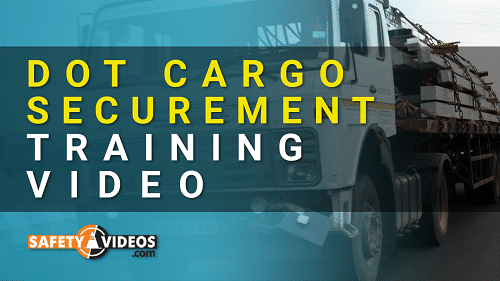
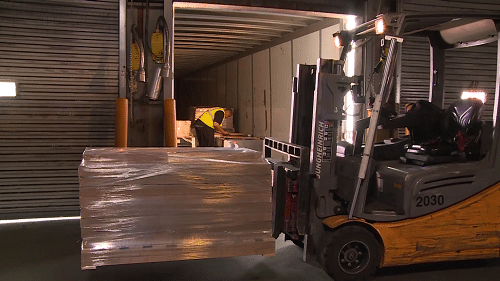
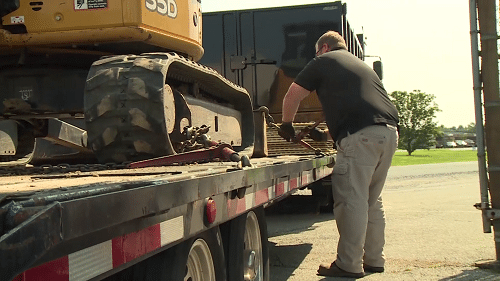
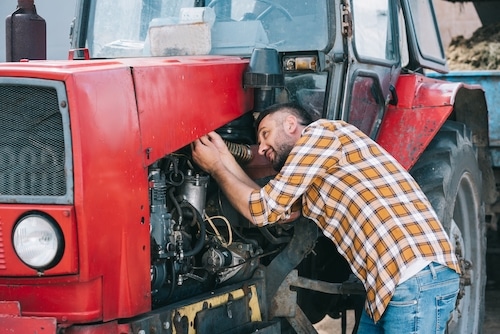
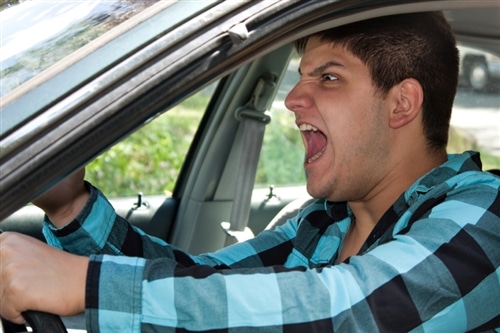


Good for what we paid for it. Nice quality!
Very practical advice.
Solid fundamentals covered.
Perfect for truckers and haulers.